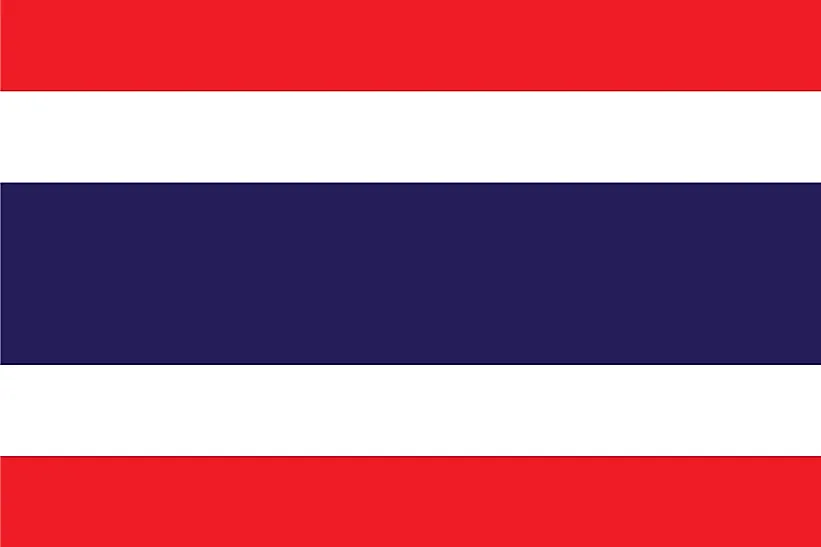
Thailand
| Continent | Asia |
| Capital | Bangkok |
| Population | 68,200,824 |
| GDP | $1.16 Trillion |
| GDP per Capita | $16,800 |
| Dialing Code | +66 |
| ISO Code (2-letter) | TH |
| ISO Code (3-letter) | THA |
About Thailand
Welcome to Thailand, a nation of rich cultural heritage and tropical beauty. With approximately 70 million people across 513,120 square kilometers, Thailand combines ancient traditions with modern dynamism, standing as a vibrant hub of Southeast Asian culture and commerce.
Geographic Features and Natural Beauty
Thailand’s geography encompasses diverse landscapes from mountainous north to tropical islands. The country features dramatic limestone cliffs, pristine beaches along two coastlines, and extensive river systems including the Chao Phraya.
The landscape includes tropical rainforests, fertile central plains, and coral reefs. The country’s varied terrain creates diverse ecosystems supporting unique wildlife including Asian elephants and various tropical species.
Protected areas include numerous national parks like Khao Yai and marine reserves. The country’s commitment to conservation focuses on preserving its biodiversity while managing sustainable tourism.
Cultural Heritage and Traditions
Thai culture represents a sophisticated blend of ancient traditions and Buddhist philosophy. The country’s heritage includes distinctive architecture, elaborate arts, and the world-renowned Thai cuisine.
Traditional arts include classical dance, temple painting, and traditional music. Cultural practices feature important Buddhist ceremonies, traditional festivals like Songkran, and the distinctive wai greeting.
Thai cuisine, celebrated globally, features a complex balance of flavors in dishes like pad thai, tom yum, and green curry. The tradition of Thai hospitality and sanuk (enjoyment) remains central to social life.
Historical Journey
Thailand’s history spans from ancient kingdoms through the distinction of never being colonized. The country was historically known as Siam until 1939.
Significant periods include the Sukhothai and Ayutthaya kingdoms, the Chakri Dynasty’s modernization, and development as a constitutional monarchy. The country’s independence and adaptability have shaped its unique identity.
Modern Economic Landscape
Today’s Thai economy focuses on manufacturing, tourism, and agriculture. The country is a major exporter of agricultural products and a leading tourist destination.
Recent initiatives emphasize digital transformation, infrastructure development, and the Thailand 4.0 economic model. Thailand’s strategic location and diverse economy support its position as a regional hub.
International Relations and Global Position
Thailand maintains significant influence through ASEAN leadership and cultural diplomacy. The country’s economic strength and cultural appeal extend its regional significance.
Did You Know?
• Thailand is the only Southeast Asian country never colonized by European powers?
• The Thai alphabet has 44 consonants and 32 vowels?
• Bangkok’s full ceremonial name is the longest place name in the world?
• Thai cuisine is based on a complex balance of five fundamental flavors?
Conclusion
Thailand represents a unique combination of tradition and progress. From its ancient temples to its modern cities, from its traditional arts to its innovative industries, Thailand continues to evolve while preserving its cultural essence. As it addresses challenges including sustainable development and economic transformation, Thailand remains committed to progress while maintaining its position as a cultural and economic leader in Southeast Asia.





